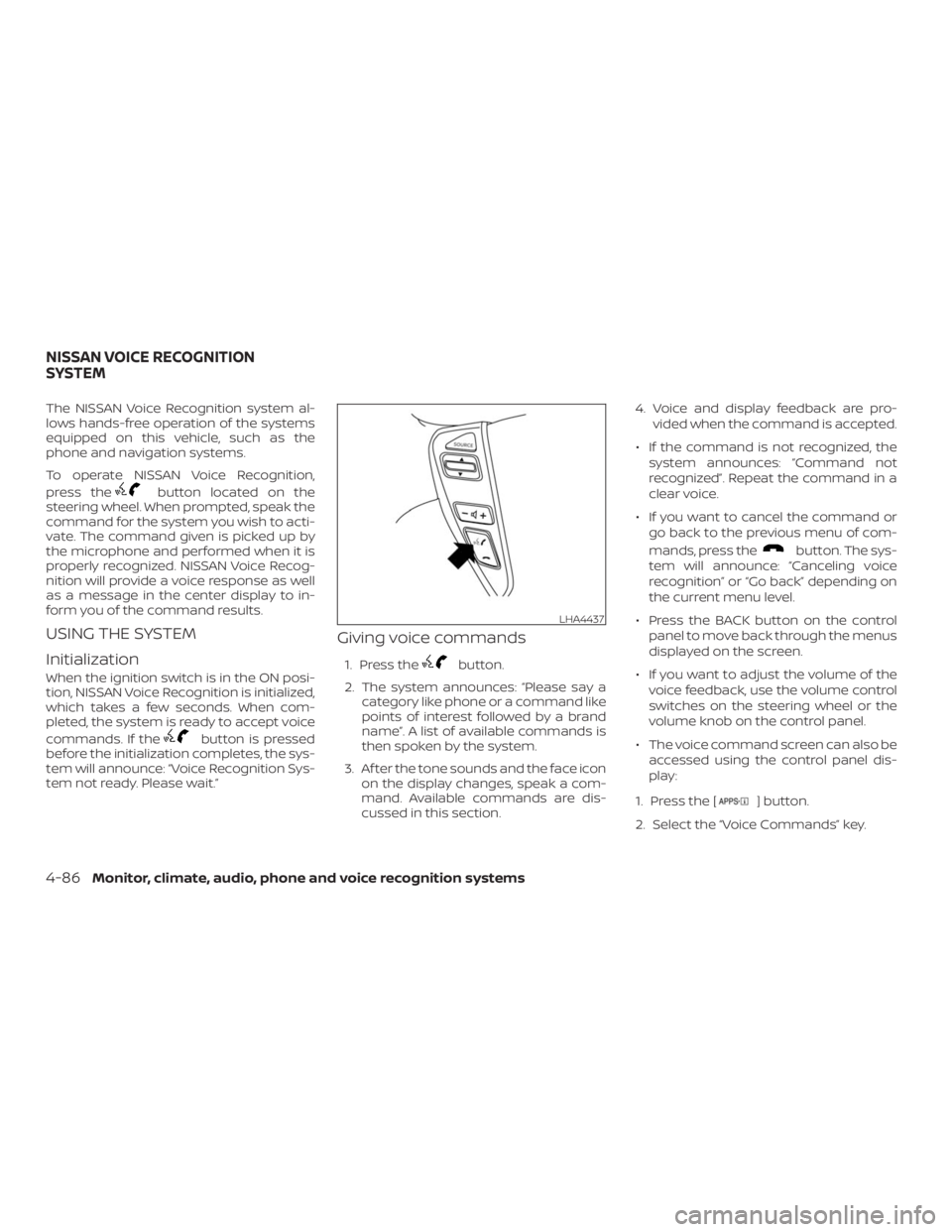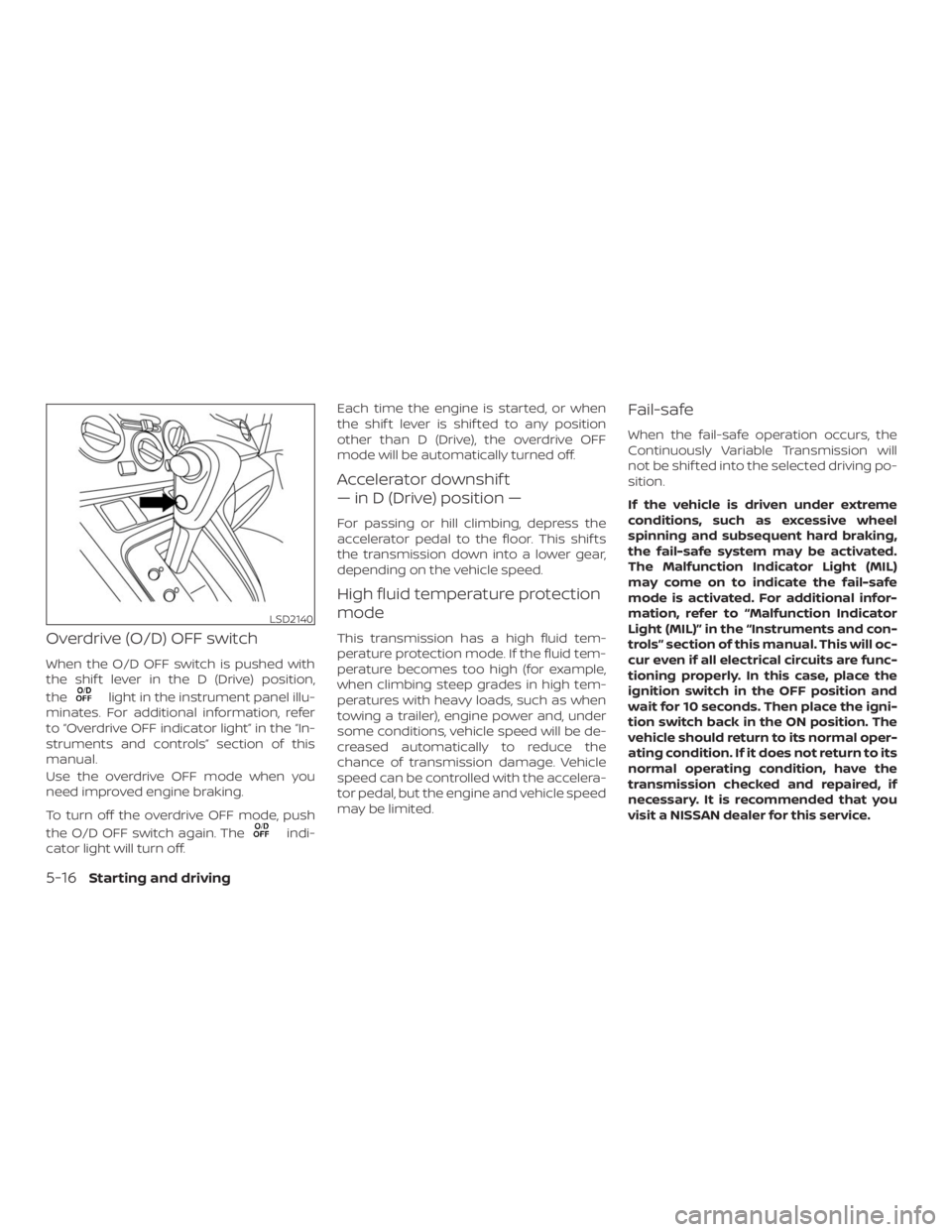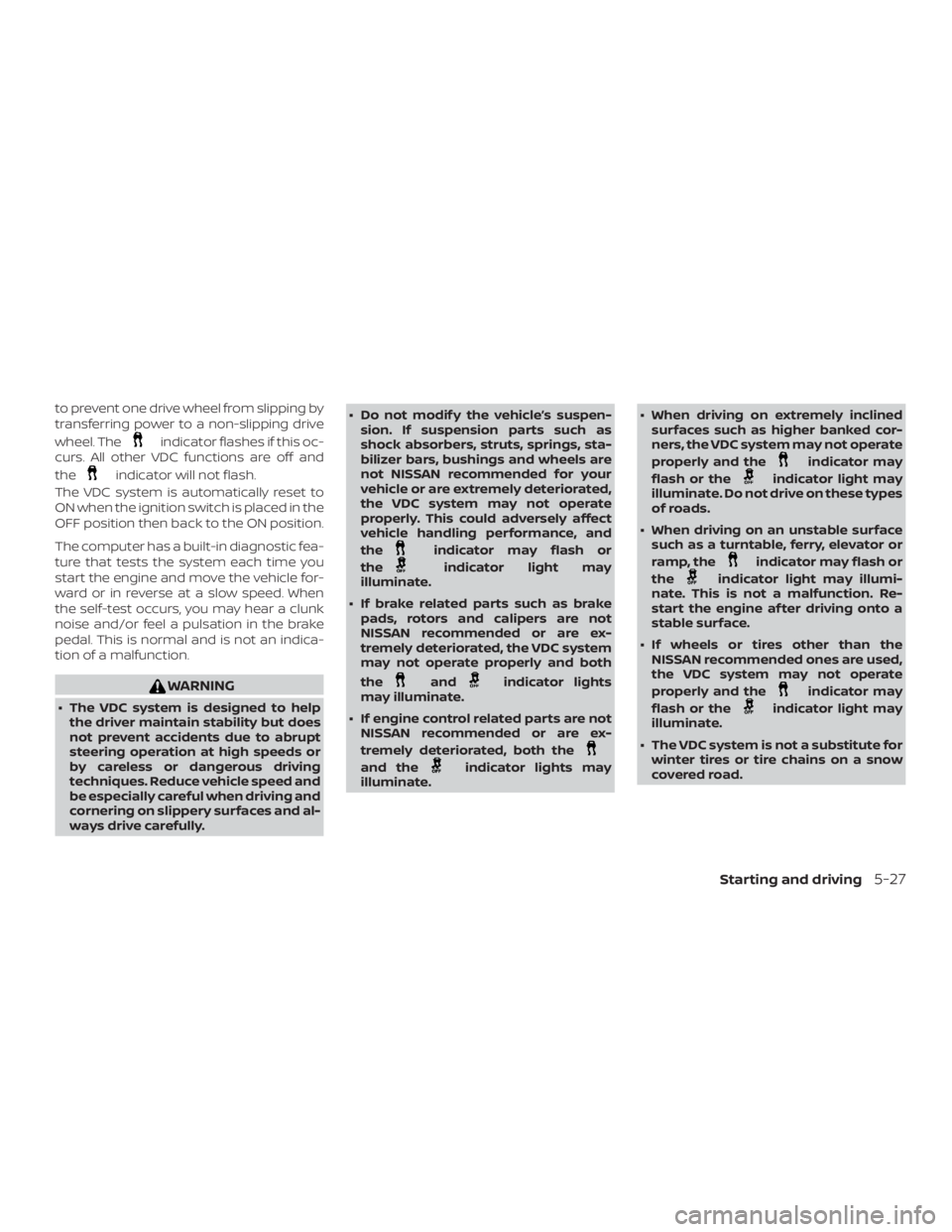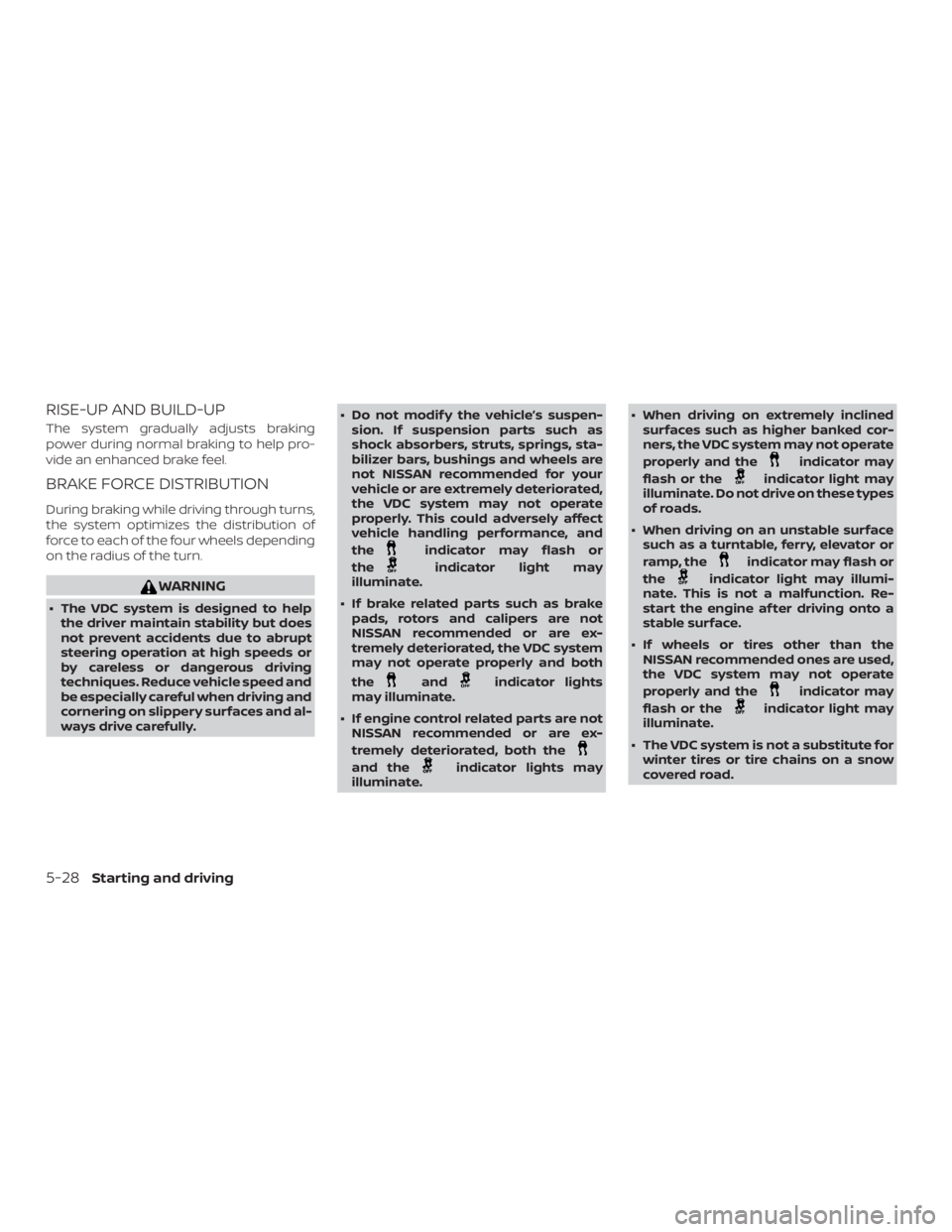Page 208 of 372
button on the steering
wheel.
2. Say af ter the tone.
3. Say TextŽ af ter the tone.The text message, sender and delivery
time are shown on the screen. Use the tun-
ing switch to scroll through all text mes-
sages if more than one are available. Press
the
button to exit the text message
screen. Press the
button to access
the following options for replying to the text
message:
� Call Back
Speak this command to call the sender
of the text message using the
Bluetooth® Hands-Free Phone System.
� Send Text
Speak this command to send a text
message response to the sender of the
text message.� Read Text
Speak this command to read the text
message again.
� Previous Text
Speak this command to move to the
previous text message (if available).
� Next Text
Speak this command to move to the
next text message (if available).
NOTE:
Text messages are only displayed if the
vehicle speed is less than 5 mph
(8 km/h).
4-82Monitor, climate, audio, phone and voice recognition systems
Page 212 of 372

button located on the
steering wheel. When prompted, speak the
command for the system you wish to acti-
vate. The command given is picked up by
the microphone and performed when it is
properly recognized. NISSAN Voice Recog-
nition will provide a voice response as well
as a message in the center display to in-
form you of the command results.
USING THE SYSTEM
Initialization
When the ignition switch is in the ON posi-
tion, NISSAN Voice Recognition is initialized,
which takes a few seconds. When com-
pleted, the system is ready to accept voice
commands. If the
button is pressed
before the initialization completes, the sys-
tem will announce: Recognition Sys-
tem not ready. Please wait.Ž
Giving voice commands
1. Press thebutton.
2. The system announces: say a
category like phone or a command like
points of interest followed by a brand
nameŽ. A list of available commands is
then spoken by the system.
3. Af ter the tone sounds and the face icon
on the display changes, speak a com-
mand. Available commands are dis-
cussed in this section.4. Voice and display feedback are pro-
vided when the command is accepted.
� If the command is not recognized, the
system announces: not
recognizedŽ. Repeat the command in a
clear voice.
� If you want to cancel the command or
go back to the previous menu of com-
mands, press the
button. The sys-
tem will announce: voice
recognitionŽ or backŽ depending on
the current menu level.
� Press the BACK button on the control
panel to move back through the menus
displayed on the screen.
� If you want to adjust the volume of the
voice feedback, use the volume control
switches on the steering wheel or the
volume knob on the control panel.
� The voice command screen can also be
accessed using the control panel dis-
play:
1. Press the [
] button.
2. Select the CommandsŽ key.
LHA4437
NISSAN VOICE RECOGNITION
SYSTEM
Page 223 of 372
CAUTION
Do not place metalized film or any
metal parts (antenna, etc.) on the win-
dows. This may cause poor reception of
the signals from the tire pressure sen-
sors, and the TPMS will not function
properly.Some devices and transmitters may tem-
porarily interfere with the operation of the
TPMS and cause the low tire pressure
warning light to illuminate.
Some examples are:
∙ Facilities or electric devices using simi-
lar radio frequencies are near the ve-
hicle.
∙ If a transmitter set to similar frequen-
cies is being used in or near the vehicle.
∙ If a computer (or similar equipment) or
a DC/AC converter is being used in or
near the vehicle.
The low tire pressure warning light may
illuminate in the following cases:
∙ If the vehicle is equipped with a wheel
and tire without TPMS.
∙ If the TPMS has been replaced and the
ID has not been registered.
∙ If the wheel is not originally specified by
NISSAN.
Starting and driving5-5
Page 234 of 372

light in the instrument panel illu-
minates. For additional information, refer
to OFF indicator lightŽ in the
struments and controlsŽ section of this
manual.
Use the overdrive OFF mode when you
need improved engine braking.
To turn off the overdrive OFF mode, push
the O/D OFF switch again. The
indi-
cator light will turn off.Each time the engine is started, or when
the shif t lever is shif ted to any position
other than D (Drive), the overdrive OFF
mode will be automatically turned off.
Accelerator downshif t
„ in D (Drive) position „
For passing or hill climbing, depress the
accelerator pedal to the floor. This shif ts
the transmission down into a lower gear,
depending on the vehicle speed.
High fluid temperature protection
mode
This transmission has a high fluid tem-
perature protection mode. If the fluid tem-
perature becomes too high (for example,
when climbing steep grades in high tem-
peratures with heavy loads, such as when
towing a trailer), engine power and, under
some conditions, vehicle speed will be de-
creased automatically to reduce the
chance of transmission damage. Vehicle
speed can be controlled with the accelera-
tor pedal, but the engine and vehicle speed
may be limited.
Fail-safe
When the fail-safe operation occurs, the
Continuously Variable Transmission will
not be shif ted into the selected driving po-
sition.
If the vehicle is driven under extreme
conditions, such as excessive wheel
spinning and subsequent hard braking,
the fail-safe system may be activated.
The Malfunction Indicator Light (MIL)
may come on to indicate the fail-safe
mode is activated. For additional infor-
mation, refer to “Malfunction Indicator
Light (MIL)” in the “Instruments and con-
trols” section of this manual. This will oc-
cur even if all electrical circuits are func-
tioning properly. In this case, place the
ignition switch in the OFF position and
wait for 10 seconds. Then place the igni-
tion switch back in the ON position. The
vehicle should return to its normal oper-
ating condition. If it does not return to its
normal operating condition, have the
transmission checked and repaired, if
necessary. It is recommended that you
visit a NISSAN dealer for this service.
5-16Starting and driving
Page 245 of 372

indicator flashes if this oc-
curs. All other VDC functions are off and
the
indicator will not flash.
The VDC system is automatically reset to
ON when the ignition switch is placed in the
OFF position then back to the ON position.
The computer has a built-in diagnostic fea-
ture that tests the system each time you
start the engine and move the vehicle for-
ward or in reverse at a slow speed. When
the self-test occurs, you may hear a clunk
noise and/or feel a pulsation in the brake
pedal. This is normal and is not an indica-
tion of a malfunction.
indicator may flash or
the
indicator light may
illuminate.
� If brake related parts such as brake
pads, rotors and calipers are not
NISSAN recommended or are ex-
tremely deteriorated, the VDC system
may not operate properly and both
the
andindicator lights
may illuminate.
� If engine control related parts are not
NISSAN recommended or are ex-
tremely deteriorated, both the
and theindicator lights may
illuminate.� When driving on extremely inclined
surfaces such as higher banked cor-
ners, the VDC system may not operate
properly and the
indicator may
flash or the
indicator light may
illuminate. Do not drive on these types
of roads.
� When driving on an unstable surface
such as a turntable, ferry, elevator or
ramp, the
indicator may flash or
the
indicator light may illumi-
nate. This is not a malfunction. Re-
start the engine af ter driving onto a
stable surface.
� If wheels or tires other than the
NISSAN recommended ones are used,
the VDC system may not operate
properly and the
indicator may
flash or the
indicator light may
illuminate.
� The VDC system is not a substitute for
winter tires or tire chains on a snow
covered road.
Starting and driving5-27
Page 246 of 372

indicator may flash or
the
indicator light may
illuminate.
� If brake related parts such as brake
pads, rotors and calipers are not
NISSAN recommended or are ex-
tremely deteriorated, the VDC system
may not operate properly and both
the
andindicator lights
may illuminate.
� If engine control related parts are not
NISSAN recommended or are ex-
tremely deteriorated, both the
and theindicator lights may
illuminate.� When driving on extremely inclined
surfaces such as higher banked cor-
ners, the VDC system may not operate
properly and the
indicator may
flash or the
indicator light may
illuminate. Do not drive on these types
of roads.
� When driving on an unstable surface
such as a turntable, ferry, elevator or
ramp, the
indicator may flash or
the
indicator light may illumi-
nate. This is not a malfunction. Re-
start the engine af ter driving onto a
stable surface.
� If wheels or tires other than the
NISSAN recommended ones are used,
the VDC system may not operate
properly and the
indicator may
flash or the
indicator light may
illuminate.
� The VDC system is not a substitute for
winter tires or tire chains on a snow
covered road.
5-28Starting and driving
Page 347 of 372
Overall length in (mm) 186.3 (4,732.5)
Overall width in (mm) 68.1 (1,729.5)
Overall height in (mm) 73.7 (1,871.7)
Front Track in (mm) 60 (1,525)
Rear Track in (mm) 59.8 (1,520)
Wheelbase in (mm) 115.2 (2,925)
Gross vehicle weight
ratinglbs. (kg) See the
S./C.M.V.S.S. cer-
tification labelŽ
on the center
pillar between
the side
front and rear
doors. Gross axle weight rating
Front lbs. (kg)
Rear lbs. (kg)
Technical and consumer information10-9